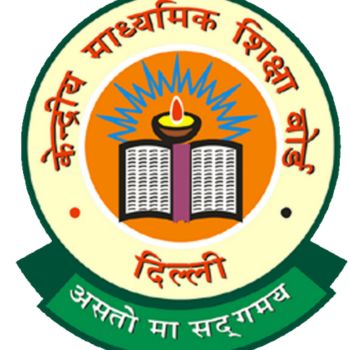BA Textile Design course guides the students through the entire fabric journey - fiber, weaving or weaving structures, applying dyes and prints, and finishing clothes for apparel, home and technical uses. To enter the course, candidates typically need to pass Class 12 (any section) with a total marks at least 45-50 percent and a design initiation aptitude entrance gate such as NIFT GAT+CAT, NID, DAT, Pearl Academy DAT, etc. Shortlisted students then sit a portfolio review or studio test as part of the counseling process.
The curriculum fees vary widely, ranging from INR 6,00,000 to INR 14,00,000. Flagship colleges include NIFT (Delhi, Mumbai, Bangalore, Kannur), Nidahmadabad, Sirje.J. Shhol of Art (Mumbai), The Maharaja Sayajiro University of Baroda, Pearl Academy, Symbiosis Institute of Design and Jadestituts of Fashion Technology.
Graduate textile or print designers, CAD artists, Collagists, Product Development Executives, Merchandisers, Quality-Control Analysts, and trend forecaster steps into roles. The entry-level salary usually starts around INR 3–5 LPA, climbing to INR 6–10 LPA with 3-5 years.
Table of Contents
- BA Textile Design Key Highlights
- What is a BA Textile Design?
- Why Study BA Textile Design?
- Who should study BA (Textile Design)?
- BA Textile Design Eligibility Criteria
- BA Textile Design Entrance Exams 2025
- BA Textile Design Colleges in India
- BA Textile Design Admission Process 2025
- BA Textile Design Syllabus
- BA Textile Design Job Opportunities in India
- BA Textile Design FAQs
BA Textile Design Key Highlights
Below are the key highlights of the B.A. Textile Design course in India:
What is a BA Textile Design?
The BA Textile Design course is a graduate program that mixes creative design with technical textile knowledge. Students detect the full life cycle of fabric-from fibre-prepared product-weaving, dyeing and printing, workshops on the hands as well as digital equipment such as Adobe Illustrator and Nedgraphics. The course emphasises stability, trend forecasting and market research. With design, students learn textile science, quality control and production processes. Industry internships and collaborative projects help to create a strong portfolio and real-world exposure. Graduates can pursue a career in fashion, interiors, textiles, durable materials, or start their design enterprise.
Beyond creative practice, the degree is versatile in, industry. The prepared professionals are structured for the manufacture. Classes at Textile Science, Quality, Hasural Testing, Supply, Chain Logistics, and Merchandising Supplementary Design Studios ensure that graduates understand both artistry and engineering behind the production of clothes.
Why Study BA Textile Design?
The BA Textile Design course has a versatile and creative graduate program that opens the doors for a dynamic and rewarding career in the textile and fashion industries. The reasons were for B.A. Should consider chasing. The textile design is as follows:
- Booming Domestic and Export Market: India's textile and apparel sector is targeting US$ 100BN exports by 2030, which continuously enhances designer demand.
- Mixing of creativity and technology: Mixing courses, craft traditions, and digital devices - ideal for right and left brain thinkers.
- Various career paths: From Couture House and Mill Clusters (Surat, Tiruppur) to home and furnishing giants and sports, performance clothes, roles design, product development, merchandising, and R&D.
- Global Exposure: Institutions like NIFT & NID offer semesters with FIT (Newyork), ENSAIT (France); Students are shown at Texworld, Hemataxil and Lakme Fashion Week.
Who should study BA (Textile Design)?
The BA Textile design course is a sought-after course in India that mixes creativity with industry-ready skills, opening doors to diverse careers in fashion, interiors and durable garments. With the increasing demand for unique, environment-conscious designs and innovations in fabric technology, this course is emotional on art, trends and craftsmanship for students. Below are the types of students who B.A. The most suitable for advancing. In textile design:
- Creative people who enjoy sketching patterns, experiment with colour, or are working with loom, pigments and clothes.
- Science Stream Students who are eager to apply chemistry/physics, smart textile and material innovation.
- Those who want the roles in fashion, interiors, household items, or technical textiles (medical, motor vehicle, games).
- Future entrepreneurs want to revive crafts or create durable D2C brands.
BA Textile Design Eligibility Criteria
BA textile design program in India to enroll in, candidates must meet some eligibility requirements set by the respective universities or design institutions. These usually include:
- Complete 10+2 or equivalent from a recognized board in any stream (science, commerce, or art).
- Minimum 45-50% total marks in the qualifying examination.
- Entrance examination, NIFT UG GAT + CAT, NIFT DAT, etc.
BA Textile Design Entrance Exams 2025
BA textile design course in India, candidates are usually required to qualify through entrance examinations conducted at the national, state or university level. Most top design institutes assess students on their creativity, design qualifications and general awareness. Admission is often given on the basis of merit and performance in these examinations, followed by a studio test or interview in some cases. Some popular entrance exams are listed below:
BA Textile Design Colleges in India
Many prestigious institutions across India have a BA Textile Design program, each with its own admission process and entrance examination criteria. The admission is generally based on the design entrance examination, academic records and individual interviews or performance in portfolio reviews. Below there are some of the top colleges for. Textile design in India, their approximate course fee, recognised entrance exam and ranking:
BA Textile Design Admission Process 2025
Below are the detailed steps for applying to the BA Textile Design course at Amity University Noida.
Step 1: Click the "Apply now" link on the Amity University page. Input your telephone number and email address to proceed with registration. Input your contact, academic, and personal details.
Step 2: Select the B.A. program in the next step.Recently upload necessary documents like passport-size photos, class 10th and 12th marksheet and identity proof.
Step 3: To complete your form submission, pay the application fee online (about) 1,100) through net banking, debit/credit card, or UPI.
Step 4: Wait for Amity University to schedule admission tests and/or individual interview (PI). For design programs, portfolio submissions can also be requested.
Step 5: Admission tests (if applied), personal interview, and/or submit your portfolio online or individually. Performance in these stages determines your selection.
Step 6: The selected applicants will receive an email or SMS with an admission motion letter.
To secure your place, take the offer and pay the first online tuition fee.
Step 7: Proceed to the Amity campus assigned for orientation and document submission according to the timeline. Submit the required documents both in original and duplicated form.
Required Documents:
- 10th and 12th marksheets
- Aadhar card or other valid photo ID
- Passport-size photographs
- Transfer/migration certificate
- Character certificate from the previous school
- Category certificate (if applicable)
- Portfolio (optional but recommended)
BA Textile Design Syllabus
Syllabus for BA Textile design course at Amity University is designed to provide students with textile process, design principles and a strong foundation in content exploration. While the main subjects remain in conformity with most design institutions, there may be minor changes based on the university's academic structure. For reference, the BA Textile Design Syllabus at Amity University includes the following major areas:
BA Textile Design Job Opportunities in India
BA in textile design, graduates of Amity University can pursue various career paths in textile, fashion and interior industries. They are equipped to work with both traditional and contemporary design techniques, permanent practices and digital devices. BA. Some common job roles for. Textile design graduates include:
BA Textile Design FAQs
What kind of projects BA Textile design students usually work?
Students are usually engaged in projects such as fabric print development, surface ornamentation, durable textile exploration and home or fashion textile collection. These projects help them apply design principles to the challenges of the real-world industry when creating a strong portfolio.
How important CAD is in. B.A Textile Design Course?
CAD (Computer Aided Design) tools such as Adobe Illustrator and Nedgrafix play an important role. They are used to make patterns, engineer prints, and to make final textile products digitally, making students industry-tales and technology-loving.
Is there any industry exposure during the BA Textile Design course?
Yes, the majority of universities, including Amity, provide internships. They also engage students in live projects and exhibitions for professional experience.
Can students be specialised in a particular area of textile design?
Yes, students can specialise in subject areas like print design, weaving, surface ornamentation, domestic items, or durable materials, which are based on their choice and voluntarily introduced by the university.
How does this course help to make a career in fashion or interior design?
The textile design forms the foundation of both fashion and internal aesthetics. The course enables students to create original cloth concepts for clothing, upholstery, or home decorations, making them fit for a career in both industries.











